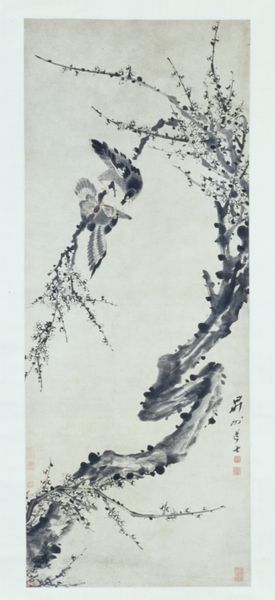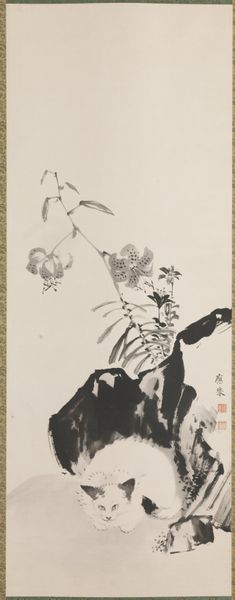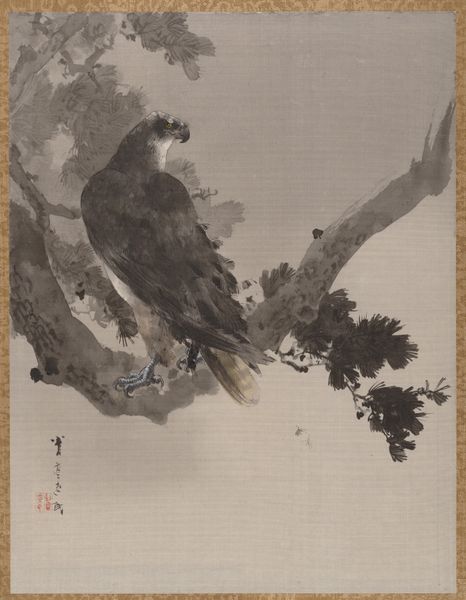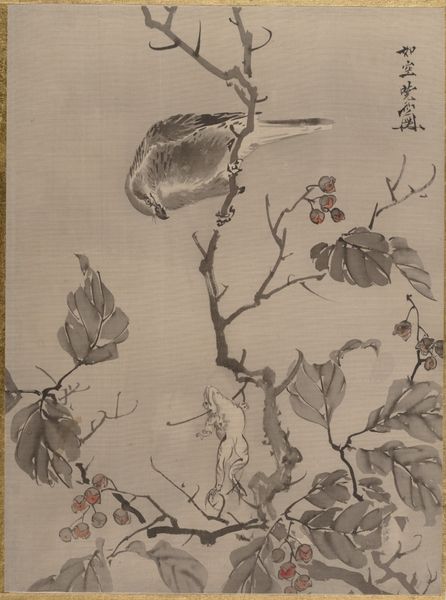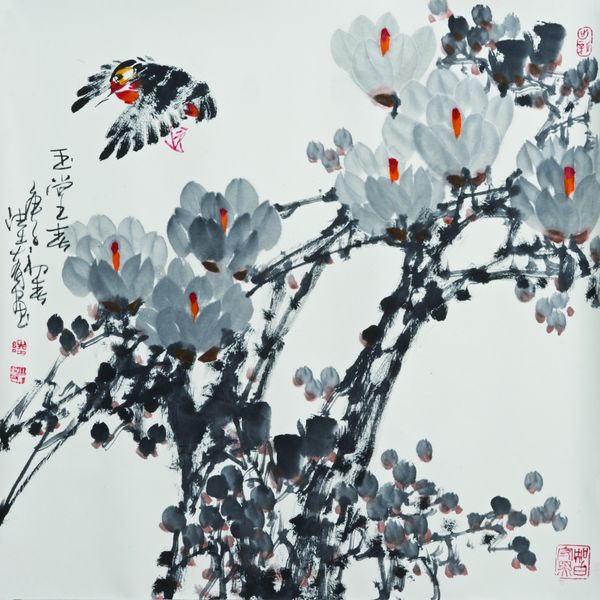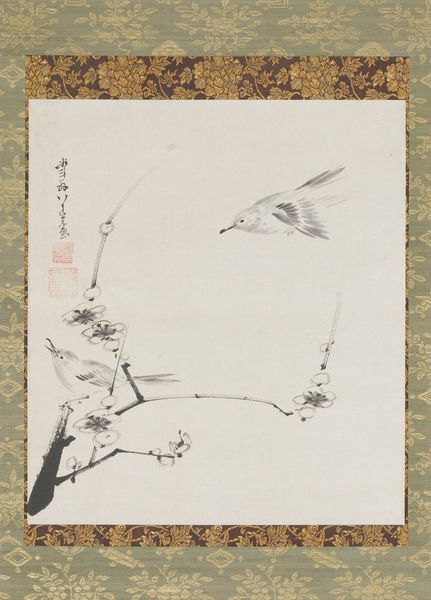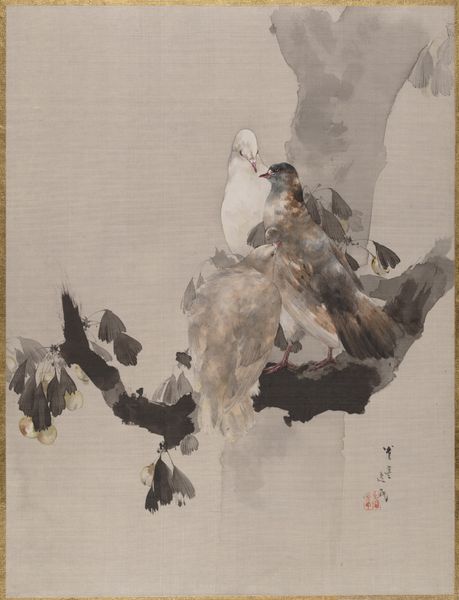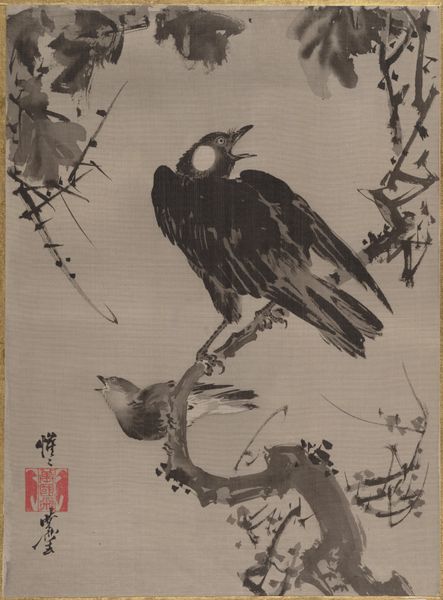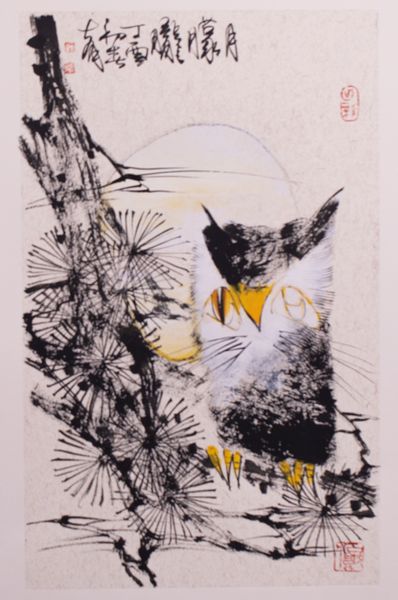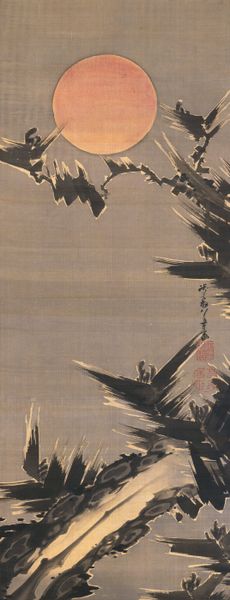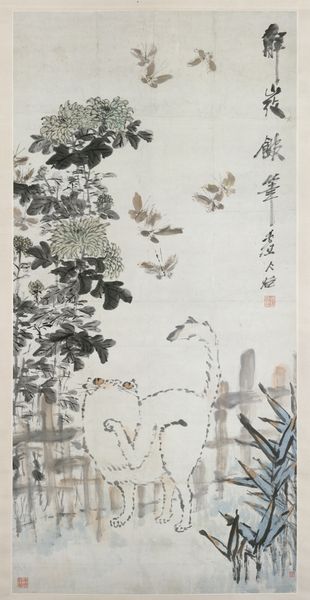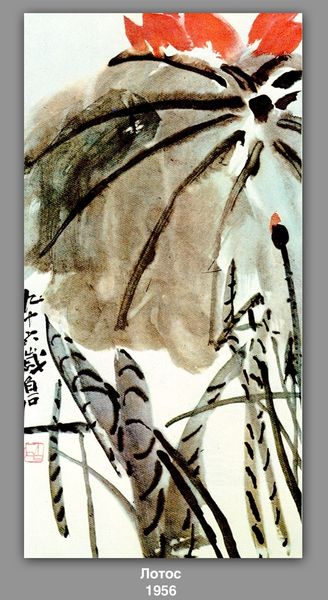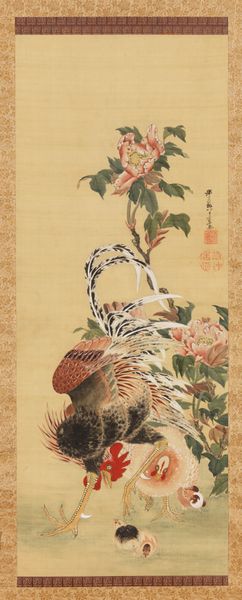
painting, watercolor, ink
#
painting
#
asian-art
#
landscape
#
figuration
#
form
#
watercolor
#
ink
#
line
#
watercolor
Dimensions: 65 x 45 cm
Copyright: Dayou Lu,Fair Use
Curator: Ah, here we have Dayou Lu's "Harvest in the Autumn," created in 2019. It’s currently housed at the Shanghai Museum. The work employs watercolor and ink, typical for East Asian painting traditions. Editor: My initial impression is one of quiet observation. The soft watercolor palette, along with the gentle curvature of the lines, feels very calming. There's a sense of momentary stillness in this small corner of nature. Curator: Indeed. Note how the artist organizes the pictorial space. There's a dynamic interplay between positive and negative space, form and void. The lines articulate the natural forms, particularly those of the branch, fruit, and bird, generating a palpable sense of rhythm. Editor: I wonder if there's a conscious reference to classical Chinese bird-and-flower paintings, considering how prevalent that theme has been throughout Chinese history. In terms of its place in the Shanghai Museum, it seems part of a renewed interest in tradition and local art, reflecting on nature's role and what the changing seasons symbolize. Curator: That's a valid observation. By carefully rendering forms through strategic washes of color, combined with nuanced linear definition, the painting achieves a delicate balance between realism and expressive abstraction. Take a look at the brushwork of the tree trunk, for example. The application of ink shows controlled spontaneity, resulting in an exquisite interplay of dark and light values. Editor: I agree; there's so much depth here despite the subdued colors. It feels almost like the painting captures a mood instead of depicting things as they simply are. Given Shanghai's growth, I would wonder if this painting offers a reflection of simpler times and a connection with nature. A sort of imagined space for many. Curator: Perhaps it serves to invoke deeper meditation on temporality itself, revealing how transient life is within broader historical changes. That would not surprise me at all. Editor: Food for thought, certainly. This exploration really deepened my appreciation for the composition and its possible interpretations. Curator: Absolutely. Close observation highlights that this small work encourages one to reflect on how aesthetics intersects with larger contexts.
Comments
No comments
Be the first to comment and join the conversation on the ultimate creative platform.
